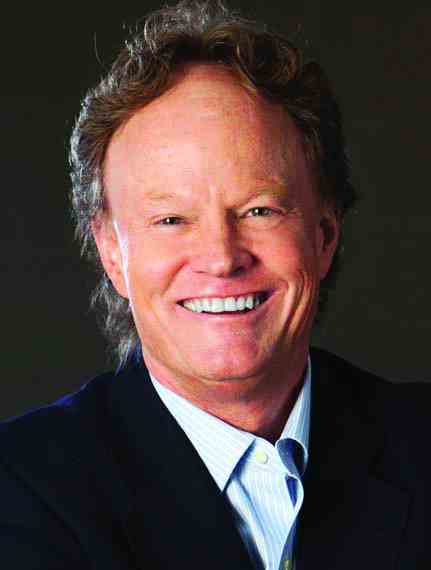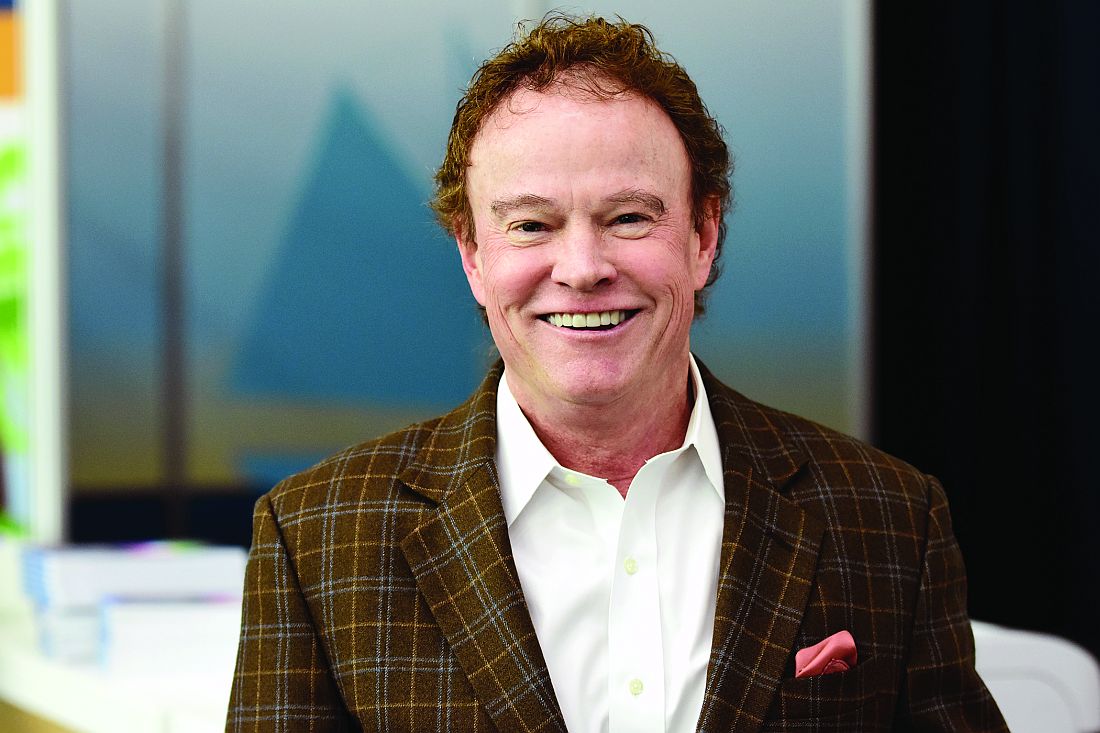User login
The impact of Election 2016
Because of the health care policy work I have done over the years, I often get asked about what to expect from Capitol Hill and from federal policy makers in D.C. Since the surprise election results in November, the most common questions revolve around what impact the Trump administration is likely to have on the delivery system reform work done since the passage of the Affordable Care Act (ACA).
While much uncertainty remains, events since the election have given us some clues to answer these and other questions.
Let’s address the ACA. It’s important to recognize that the ACA cannot be repealed completely for at least two reasons. First, it does not even exist as it was passed, having undergone several changes, including adjustments and exemptions. Second, parts of the bill would require 60 votes in the Senate to repeal, and those votes are not available to the party seeking repeal.
Yes, parts of the bill could be changed significantly with only Republican votes. However, the reality is that many changes would have occurred even if Hillary Clinton had won the election; there are elements of the current law that are not working and that both sides acknowledge need to be fixed, such as state individual insurance exchanges.
There also are parts of the ACA that neither party would like to see rescinded, which are unlikely to be removed in a new law – for example, losing insurance for preexisting conditions.
From the standpoint of providers, the most notable aspect of the current discussion is that proposed changes have largely been limited to addressing areas of insurance reform. This has potential impact on who is covered under a revised plan. In the meantime, the important work of delivery system reform – the elements of the ACA that providers care the most about (and that will have the most impact on their careers) – have been left untouched. There are strong signs that this will remain the case and that this important work will continue.
What are those signs? First of all, neither the “repeal” bill passed by the House nor any of the bills considered by the Senate made any mention of interrupting any of the important work being done by the Center for Medicare & Medicaid Innovation (CMMI), the part of the Centers for Medicare & Medicaid Services created by the ACA to develop and test alternative payment models (APMs), like accountable care organizations, bundled payments, etc. If successful, this work will improve quality while lowering the growth of health care costs and may save a health care system that, if unchecked, will create a crushing financial burden that threatens the Medicare Trust Fund. It also is a strong and clear sign that the CMMI continues its work today under the same effective leadership that first created excitement about its potential to improve the delivery system.
But probably the clearest sign that delivery system reform will continue was the strong bipartisan support shown in the passage of the Medicare Access and CHIP Reauthorization Act (MACRA) in April of 2015. This landmark piece of legislation creates a pathway that moves the entire health care system away from fee for service and toward payment models that will reward providers for innovations that will lower the cost of care, eliminate waste, improve safety, and achieve better outcomes. It puts in place a plan that will use APMs to offer providers the incentives to create care models that may be the salvation of our health care system. In the long run, isn’t this what matters the most?
Politicians in Washington can’t save our system. They can create or remove entitlements or support one segment of the population at the expense of another. But, in the end, they are only moving dollars around from one pocket to another, rearranging deck chairs on the Titanic of the American health care system.
The reality is that the only thing that can save our health care system is to lower the cost of care. And we all know that, as providers, only we can do that. SHM will be helping its members lead the way, providing educational content, training, advocacy, and policy leadership.
It will be up to the nation’s caregivers to reform the delivery system in a way that is sustainable for our generation and generations to come. We continue that work today, and I see no evidence that anyone on Capitol Hill wants us to stop.
Dr. Greeno is president of the Society of Hospital Medicine and senior adviser for medical affairs at TeamHealth.
Because of the health care policy work I have done over the years, I often get asked about what to expect from Capitol Hill and from federal policy makers in D.C. Since the surprise election results in November, the most common questions revolve around what impact the Trump administration is likely to have on the delivery system reform work done since the passage of the Affordable Care Act (ACA).
While much uncertainty remains, events since the election have given us some clues to answer these and other questions.
Let’s address the ACA. It’s important to recognize that the ACA cannot be repealed completely for at least two reasons. First, it does not even exist as it was passed, having undergone several changes, including adjustments and exemptions. Second, parts of the bill would require 60 votes in the Senate to repeal, and those votes are not available to the party seeking repeal.
Yes, parts of the bill could be changed significantly with only Republican votes. However, the reality is that many changes would have occurred even if Hillary Clinton had won the election; there are elements of the current law that are not working and that both sides acknowledge need to be fixed, such as state individual insurance exchanges.
There also are parts of the ACA that neither party would like to see rescinded, which are unlikely to be removed in a new law – for example, losing insurance for preexisting conditions.
From the standpoint of providers, the most notable aspect of the current discussion is that proposed changes have largely been limited to addressing areas of insurance reform. This has potential impact on who is covered under a revised plan. In the meantime, the important work of delivery system reform – the elements of the ACA that providers care the most about (and that will have the most impact on their careers) – have been left untouched. There are strong signs that this will remain the case and that this important work will continue.
What are those signs? First of all, neither the “repeal” bill passed by the House nor any of the bills considered by the Senate made any mention of interrupting any of the important work being done by the Center for Medicare & Medicaid Innovation (CMMI), the part of the Centers for Medicare & Medicaid Services created by the ACA to develop and test alternative payment models (APMs), like accountable care organizations, bundled payments, etc. If successful, this work will improve quality while lowering the growth of health care costs and may save a health care system that, if unchecked, will create a crushing financial burden that threatens the Medicare Trust Fund. It also is a strong and clear sign that the CMMI continues its work today under the same effective leadership that first created excitement about its potential to improve the delivery system.
But probably the clearest sign that delivery system reform will continue was the strong bipartisan support shown in the passage of the Medicare Access and CHIP Reauthorization Act (MACRA) in April of 2015. This landmark piece of legislation creates a pathway that moves the entire health care system away from fee for service and toward payment models that will reward providers for innovations that will lower the cost of care, eliminate waste, improve safety, and achieve better outcomes. It puts in place a plan that will use APMs to offer providers the incentives to create care models that may be the salvation of our health care system. In the long run, isn’t this what matters the most?
Politicians in Washington can’t save our system. They can create or remove entitlements or support one segment of the population at the expense of another. But, in the end, they are only moving dollars around from one pocket to another, rearranging deck chairs on the Titanic of the American health care system.
The reality is that the only thing that can save our health care system is to lower the cost of care. And we all know that, as providers, only we can do that. SHM will be helping its members lead the way, providing educational content, training, advocacy, and policy leadership.
It will be up to the nation’s caregivers to reform the delivery system in a way that is sustainable for our generation and generations to come. We continue that work today, and I see no evidence that anyone on Capitol Hill wants us to stop.
Dr. Greeno is president of the Society of Hospital Medicine and senior adviser for medical affairs at TeamHealth.
Because of the health care policy work I have done over the years, I often get asked about what to expect from Capitol Hill and from federal policy makers in D.C. Since the surprise election results in November, the most common questions revolve around what impact the Trump administration is likely to have on the delivery system reform work done since the passage of the Affordable Care Act (ACA).
While much uncertainty remains, events since the election have given us some clues to answer these and other questions.
Let’s address the ACA. It’s important to recognize that the ACA cannot be repealed completely for at least two reasons. First, it does not even exist as it was passed, having undergone several changes, including adjustments and exemptions. Second, parts of the bill would require 60 votes in the Senate to repeal, and those votes are not available to the party seeking repeal.
Yes, parts of the bill could be changed significantly with only Republican votes. However, the reality is that many changes would have occurred even if Hillary Clinton had won the election; there are elements of the current law that are not working and that both sides acknowledge need to be fixed, such as state individual insurance exchanges.
There also are parts of the ACA that neither party would like to see rescinded, which are unlikely to be removed in a new law – for example, losing insurance for preexisting conditions.
From the standpoint of providers, the most notable aspect of the current discussion is that proposed changes have largely been limited to addressing areas of insurance reform. This has potential impact on who is covered under a revised plan. In the meantime, the important work of delivery system reform – the elements of the ACA that providers care the most about (and that will have the most impact on their careers) – have been left untouched. There are strong signs that this will remain the case and that this important work will continue.
What are those signs? First of all, neither the “repeal” bill passed by the House nor any of the bills considered by the Senate made any mention of interrupting any of the important work being done by the Center for Medicare & Medicaid Innovation (CMMI), the part of the Centers for Medicare & Medicaid Services created by the ACA to develop and test alternative payment models (APMs), like accountable care organizations, bundled payments, etc. If successful, this work will improve quality while lowering the growth of health care costs and may save a health care system that, if unchecked, will create a crushing financial burden that threatens the Medicare Trust Fund. It also is a strong and clear sign that the CMMI continues its work today under the same effective leadership that first created excitement about its potential to improve the delivery system.
But probably the clearest sign that delivery system reform will continue was the strong bipartisan support shown in the passage of the Medicare Access and CHIP Reauthorization Act (MACRA) in April of 2015. This landmark piece of legislation creates a pathway that moves the entire health care system away from fee for service and toward payment models that will reward providers for innovations that will lower the cost of care, eliminate waste, improve safety, and achieve better outcomes. It puts in place a plan that will use APMs to offer providers the incentives to create care models that may be the salvation of our health care system. In the long run, isn’t this what matters the most?
Politicians in Washington can’t save our system. They can create or remove entitlements or support one segment of the population at the expense of another. But, in the end, they are only moving dollars around from one pocket to another, rearranging deck chairs on the Titanic of the American health care system.
The reality is that the only thing that can save our health care system is to lower the cost of care. And we all know that, as providers, only we can do that. SHM will be helping its members lead the way, providing educational content, training, advocacy, and policy leadership.
It will be up to the nation’s caregivers to reform the delivery system in a way that is sustainable for our generation and generations to come. We continue that work today, and I see no evidence that anyone on Capitol Hill wants us to stop.
Dr. Greeno is president of the Society of Hospital Medicine and senior adviser for medical affairs at TeamHealth.
Welcome to the third and final day of HM17!
Welcome to the third and final day of HM17!
Although it is the shortest day of the conference, day 3 is full of quality content, starting at 7:40 a.m. with a mini-track.
If you are interested in hearing about the impact of November’s election on health care reform, join me at the Health Policy Mini-Track starting first thing in the morning. The mini-track will begin with a session called “Hot Topics in Health Policy for Hospitalists” and will be followed by a panel of visitors from our nation’s capital who will weigh in on events in D.C. that will have an impact on our careers.
There are also three workshops in the morning including one on negotiation that I hope to attend. The second set of workshops includes one with the provocative title of “Cutting Out Things We Do for No Reason.”
And while there are too many great sessions to be able to call out each one, the prize for most creative title clearly goes to “Take Your PICC: Choosing the Right Vascular Access.”
The day, and the meeting, ends as it traditionally does with a talk by the venerable Bob Wachter, MD, MHM, who will treat us to a discussion on “Planning for the Future in a World of Constant Change: What Should Hospitalists Do?” We may even see some of his famed humor and wit as we have in past years. Everyone who has ever heard Bob speak knows that this is a session that should not be missed!
Your afternoon is free to travel home or to hit the casinos one last time.
As I begin my year as SHM President, I continue to be energized by the opportunity to meet so many of you at our Annual Meeting and to be part of an organization that continues to have such a positive impact on our nation’s health care system.
The coming year will see a continued reshaping of our delivery system, driven by emerging federal policy including the Medicare Access and CHIP Reauthorization Act of 2015 (MACRA) and anticipated changes in the Affordable Care Act. It will continue to be a priority for SHM to make sure that the voice of Hospital Medicine is heard loud and clear as decisions are made that will affect our patients and our careers. I will be asking our members to help ensure that we have a prominent place in these decision making processes. We will continue to strive to make sure that our patients get the care they deserve and that we continue to help build and maintain a sustainable health care delivery system.
This year, you will also see a focused effort to strengthen our system of state and local chapters. The vitality of these local organizations is important to our efforts to effectively serve our members by engaging them along with their colleagues.
And, of course, SHM will continue to be the only organization created to represent our nation’s hospitalists and to be totally committed to providing our members with clinical and administrative education, dedicated publications, leadership training, research opportunities, and advocacy.
I hope you enjoyed what turned out to be the largest and best Annual Meeting in our history. And I hope to see you at Hospital Medicine 2018 in Orlando.
Welcome to the third and final day of HM17!
Although it is the shortest day of the conference, day 3 is full of quality content, starting at 7:40 a.m. with a mini-track.
If you are interested in hearing about the impact of November’s election on health care reform, join me at the Health Policy Mini-Track starting first thing in the morning. The mini-track will begin with a session called “Hot Topics in Health Policy for Hospitalists” and will be followed by a panel of visitors from our nation’s capital who will weigh in on events in D.C. that will have an impact on our careers.
There are also three workshops in the morning including one on negotiation that I hope to attend. The second set of workshops includes one with the provocative title of “Cutting Out Things We Do for No Reason.”
And while there are too many great sessions to be able to call out each one, the prize for most creative title clearly goes to “Take Your PICC: Choosing the Right Vascular Access.”
The day, and the meeting, ends as it traditionally does with a talk by the venerable Bob Wachter, MD, MHM, who will treat us to a discussion on “Planning for the Future in a World of Constant Change: What Should Hospitalists Do?” We may even see some of his famed humor and wit as we have in past years. Everyone who has ever heard Bob speak knows that this is a session that should not be missed!
Your afternoon is free to travel home or to hit the casinos one last time.
As I begin my year as SHM President, I continue to be energized by the opportunity to meet so many of you at our Annual Meeting and to be part of an organization that continues to have such a positive impact on our nation’s health care system.
The coming year will see a continued reshaping of our delivery system, driven by emerging federal policy including the Medicare Access and CHIP Reauthorization Act of 2015 (MACRA) and anticipated changes in the Affordable Care Act. It will continue to be a priority for SHM to make sure that the voice of Hospital Medicine is heard loud and clear as decisions are made that will affect our patients and our careers. I will be asking our members to help ensure that we have a prominent place in these decision making processes. We will continue to strive to make sure that our patients get the care they deserve and that we continue to help build and maintain a sustainable health care delivery system.
This year, you will also see a focused effort to strengthen our system of state and local chapters. The vitality of these local organizations is important to our efforts to effectively serve our members by engaging them along with their colleagues.
And, of course, SHM will continue to be the only organization created to represent our nation’s hospitalists and to be totally committed to providing our members with clinical and administrative education, dedicated publications, leadership training, research opportunities, and advocacy.
I hope you enjoyed what turned out to be the largest and best Annual Meeting in our history. And I hope to see you at Hospital Medicine 2018 in Orlando.
Welcome to the third and final day of HM17!
Although it is the shortest day of the conference, day 3 is full of quality content, starting at 7:40 a.m. with a mini-track.
If you are interested in hearing about the impact of November’s election on health care reform, join me at the Health Policy Mini-Track starting first thing in the morning. The mini-track will begin with a session called “Hot Topics in Health Policy for Hospitalists” and will be followed by a panel of visitors from our nation’s capital who will weigh in on events in D.C. that will have an impact on our careers.
There are also three workshops in the morning including one on negotiation that I hope to attend. The second set of workshops includes one with the provocative title of “Cutting Out Things We Do for No Reason.”
And while there are too many great sessions to be able to call out each one, the prize for most creative title clearly goes to “Take Your PICC: Choosing the Right Vascular Access.”
The day, and the meeting, ends as it traditionally does with a talk by the venerable Bob Wachter, MD, MHM, who will treat us to a discussion on “Planning for the Future in a World of Constant Change: What Should Hospitalists Do?” We may even see some of his famed humor and wit as we have in past years. Everyone who has ever heard Bob speak knows that this is a session that should not be missed!
Your afternoon is free to travel home or to hit the casinos one last time.
As I begin my year as SHM President, I continue to be energized by the opportunity to meet so many of you at our Annual Meeting and to be part of an organization that continues to have such a positive impact on our nation’s health care system.
The coming year will see a continued reshaping of our delivery system, driven by emerging federal policy including the Medicare Access and CHIP Reauthorization Act of 2015 (MACRA) and anticipated changes in the Affordable Care Act. It will continue to be a priority for SHM to make sure that the voice of Hospital Medicine is heard loud and clear as decisions are made that will affect our patients and our careers. I will be asking our members to help ensure that we have a prominent place in these decision making processes. We will continue to strive to make sure that our patients get the care they deserve and that we continue to help build and maintain a sustainable health care delivery system.
This year, you will also see a focused effort to strengthen our system of state and local chapters. The vitality of these local organizations is important to our efforts to effectively serve our members by engaging them along with their colleagues.
And, of course, SHM will continue to be the only organization created to represent our nation’s hospitalists and to be totally committed to providing our members with clinical and administrative education, dedicated publications, leadership training, research opportunities, and advocacy.
I hope you enjoyed what turned out to be the largest and best Annual Meeting in our history. And I hope to see you at Hospital Medicine 2018 in Orlando.
Hospitalists: Leading health care innovation
As I begin my year as SHM president, I continue to be energized by the opportunity to be part of an organization that has such a positive impact on our nation’s health care system. From the beginning of my medical career to now, never have I witnessed a health care movement quite like hospital medicine.
Even when I first arrived in Southern California as a pulmonary/critical-care physician in 1987, there were groups of physicians who had taken financial risk on populations of managed-care patients and were paid using an “alternative payment model” called capitation. One of the innovations they had utilized since the early ’80s to successfully manage their risk – and their patients’ – was to have dedicated inpatient physicians caring for their hospitalized patients 24/7, while most of their primary care partners managed the group’s patients in the outpatient setting.
This year will see a continued reshaping of our delivery system, driven by emerging federal policy like the Medicare Access and CHIP Reauthorization Act (MACRA). All of this policy is designed to create a health care system that delivers high-quality care in a much more cost effective way. Many of these policies will result in groups of providers being pushed away from fee-for-service payment toward alternative payment models that involve higher levels of risk and opportunity. If we, as providers, are going to be successful in managing our “at risk” populations, we are going to have to be as innovative as our managed care forefathers. If we are not, we, as a society, are not going to be able to afford to deliver high-quality care to our nations sickest citizens.
At the center of much of this innovation will be hospitalists. After all, by its very nature, our model is a delivery system reform. The drive to deliver more-efficient quality care is in the very DNA of our specialty.
As decisions are made, they will have a significant impact on our patients and our careers. It will continue to be a priority for SHM to make sure that the voice of hospital medicine is heard loud and clear. We will continue to ask our members to ensure that the hospital medicine community has a prominent place in these conversations. Those who step up in this effort will lead us as we insist on having a prominent seat at the table and as new models of care emerge and new incentives are created for the provider community. We will continue to strive to make sure that our patients get the care they deserve and that we continue to help build a sustainable health care delivery system.
This year, you will also see a focused effort to strengthen SHM’s system of state and local chapters. The vitality of these local organizations is important to our efforts to effectively serve our members by engaging them with their colleagues at the local level. In our attempts to further connect our members with others who share similar interests and focuses, we will be rolling out a new structure of special interest groups. These local chapters and these interest groups will fuel new ideas that will continue to improve our specialty and the effectiveness of the society to speak for hospital medicine with a strong voice.
Of course, SHM will continue to be the only organization that was created to represent our nation’s hospitalists and will be totally committed to providing our members with clinical and administrative education, dedicated publications, leadership training, research opportunities, and advocacy. I look forward to serving you and helping you get the most from your SHM experience. Together, we will continue to move the hospital medicine movement forward, shaping our health care system and improving patient care.
Dr. Greeno is the incoming president of the Society of Hospital Medicine and senior adviser for medical affairs at TeamHealth.
As I begin my year as SHM president, I continue to be energized by the opportunity to be part of an organization that has such a positive impact on our nation’s health care system. From the beginning of my medical career to now, never have I witnessed a health care movement quite like hospital medicine.
Even when I first arrived in Southern California as a pulmonary/critical-care physician in 1987, there were groups of physicians who had taken financial risk on populations of managed-care patients and were paid using an “alternative payment model” called capitation. One of the innovations they had utilized since the early ’80s to successfully manage their risk – and their patients’ – was to have dedicated inpatient physicians caring for their hospitalized patients 24/7, while most of their primary care partners managed the group’s patients in the outpatient setting.
This year will see a continued reshaping of our delivery system, driven by emerging federal policy like the Medicare Access and CHIP Reauthorization Act (MACRA). All of this policy is designed to create a health care system that delivers high-quality care in a much more cost effective way. Many of these policies will result in groups of providers being pushed away from fee-for-service payment toward alternative payment models that involve higher levels of risk and opportunity. If we, as providers, are going to be successful in managing our “at risk” populations, we are going to have to be as innovative as our managed care forefathers. If we are not, we, as a society, are not going to be able to afford to deliver high-quality care to our nations sickest citizens.
At the center of much of this innovation will be hospitalists. After all, by its very nature, our model is a delivery system reform. The drive to deliver more-efficient quality care is in the very DNA of our specialty.
As decisions are made, they will have a significant impact on our patients and our careers. It will continue to be a priority for SHM to make sure that the voice of hospital medicine is heard loud and clear. We will continue to ask our members to ensure that the hospital medicine community has a prominent place in these conversations. Those who step up in this effort will lead us as we insist on having a prominent seat at the table and as new models of care emerge and new incentives are created for the provider community. We will continue to strive to make sure that our patients get the care they deserve and that we continue to help build a sustainable health care delivery system.
This year, you will also see a focused effort to strengthen SHM’s system of state and local chapters. The vitality of these local organizations is important to our efforts to effectively serve our members by engaging them with their colleagues at the local level. In our attempts to further connect our members with others who share similar interests and focuses, we will be rolling out a new structure of special interest groups. These local chapters and these interest groups will fuel new ideas that will continue to improve our specialty and the effectiveness of the society to speak for hospital medicine with a strong voice.
Of course, SHM will continue to be the only organization that was created to represent our nation’s hospitalists and will be totally committed to providing our members with clinical and administrative education, dedicated publications, leadership training, research opportunities, and advocacy. I look forward to serving you and helping you get the most from your SHM experience. Together, we will continue to move the hospital medicine movement forward, shaping our health care system and improving patient care.
Dr. Greeno is the incoming president of the Society of Hospital Medicine and senior adviser for medical affairs at TeamHealth.
As I begin my year as SHM president, I continue to be energized by the opportunity to be part of an organization that has such a positive impact on our nation’s health care system. From the beginning of my medical career to now, never have I witnessed a health care movement quite like hospital medicine.
Even when I first arrived in Southern California as a pulmonary/critical-care physician in 1987, there were groups of physicians who had taken financial risk on populations of managed-care patients and were paid using an “alternative payment model” called capitation. One of the innovations they had utilized since the early ’80s to successfully manage their risk – and their patients’ – was to have dedicated inpatient physicians caring for their hospitalized patients 24/7, while most of their primary care partners managed the group’s patients in the outpatient setting.
This year will see a continued reshaping of our delivery system, driven by emerging federal policy like the Medicare Access and CHIP Reauthorization Act (MACRA). All of this policy is designed to create a health care system that delivers high-quality care in a much more cost effective way. Many of these policies will result in groups of providers being pushed away from fee-for-service payment toward alternative payment models that involve higher levels of risk and opportunity. If we, as providers, are going to be successful in managing our “at risk” populations, we are going to have to be as innovative as our managed care forefathers. If we are not, we, as a society, are not going to be able to afford to deliver high-quality care to our nations sickest citizens.
At the center of much of this innovation will be hospitalists. After all, by its very nature, our model is a delivery system reform. The drive to deliver more-efficient quality care is in the very DNA of our specialty.
As decisions are made, they will have a significant impact on our patients and our careers. It will continue to be a priority for SHM to make sure that the voice of hospital medicine is heard loud and clear. We will continue to ask our members to ensure that the hospital medicine community has a prominent place in these conversations. Those who step up in this effort will lead us as we insist on having a prominent seat at the table and as new models of care emerge and new incentives are created for the provider community. We will continue to strive to make sure that our patients get the care they deserve and that we continue to help build a sustainable health care delivery system.
This year, you will also see a focused effort to strengthen SHM’s system of state and local chapters. The vitality of these local organizations is important to our efforts to effectively serve our members by engaging them with their colleagues at the local level. In our attempts to further connect our members with others who share similar interests and focuses, we will be rolling out a new structure of special interest groups. These local chapters and these interest groups will fuel new ideas that will continue to improve our specialty and the effectiveness of the society to speak for hospital medicine with a strong voice.
Of course, SHM will continue to be the only organization that was created to represent our nation’s hospitalists and will be totally committed to providing our members with clinical and administrative education, dedicated publications, leadership training, research opportunities, and advocacy. I look forward to serving you and helping you get the most from your SHM experience. Together, we will continue to move the hospital medicine movement forward, shaping our health care system and improving patient care.
Dr. Greeno is the incoming president of the Society of Hospital Medicine and senior adviser for medical affairs at TeamHealth.






